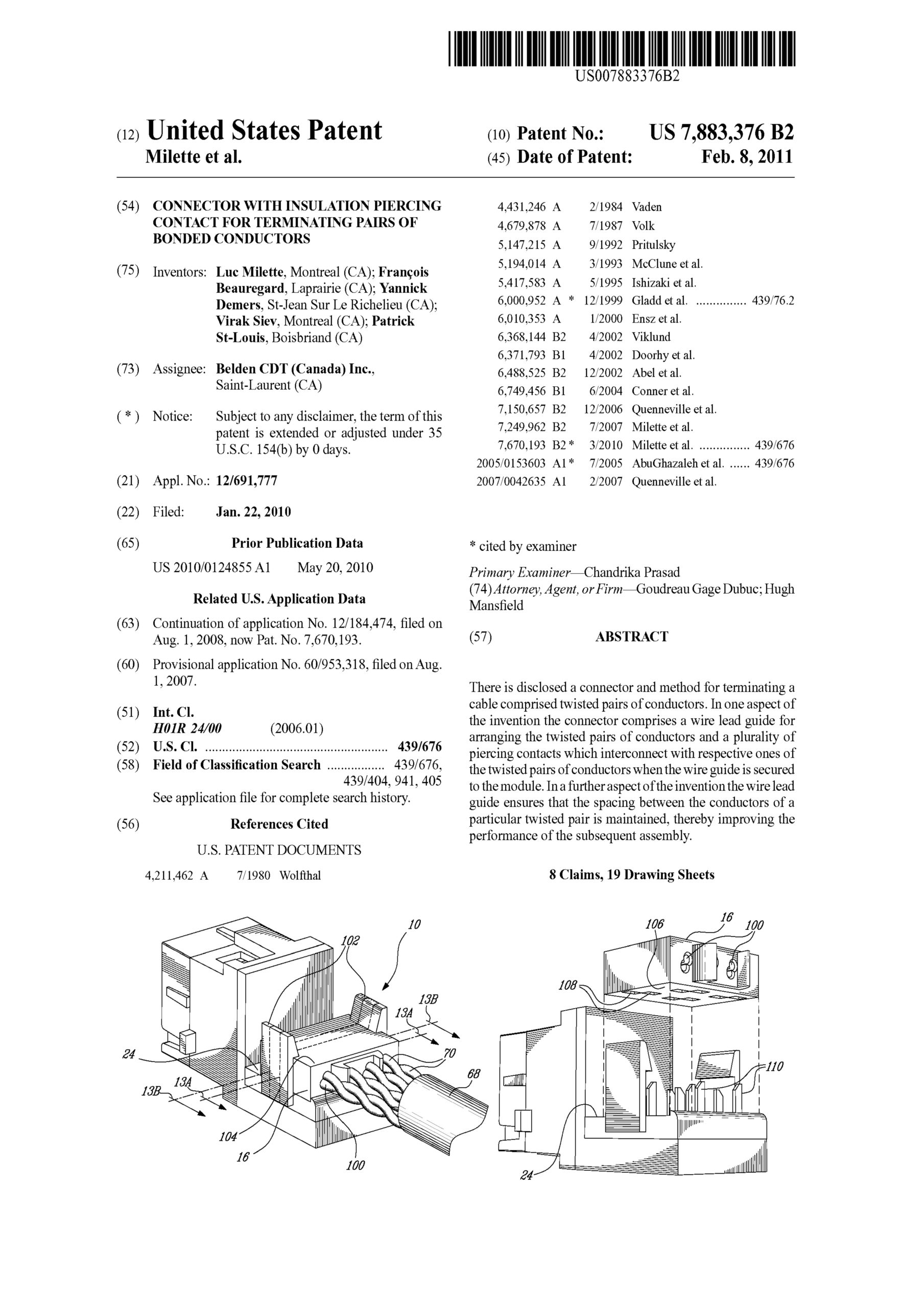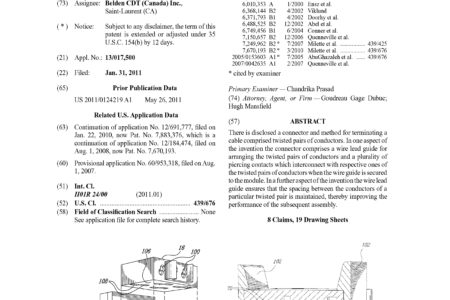Connector with insulation piercing contact for terminating pairs of bonded conductors
There is disclosed a connector and method for terminating a cable comprised twisted pairs of conductors. In one aspect of the invention the connector comprises a wire lead guide for arranging the twisted pairs of conductors and a plurality of piercing contacts which interconnect with respective ones of the twisted pairs of conductors when the wire guide is secured to the module. In a further aspect of the invention the wire lead guide ensures that the spacing between the conductors of a particular twisted pair is maintained, thereby improving the performance of the subsequent assembly.


